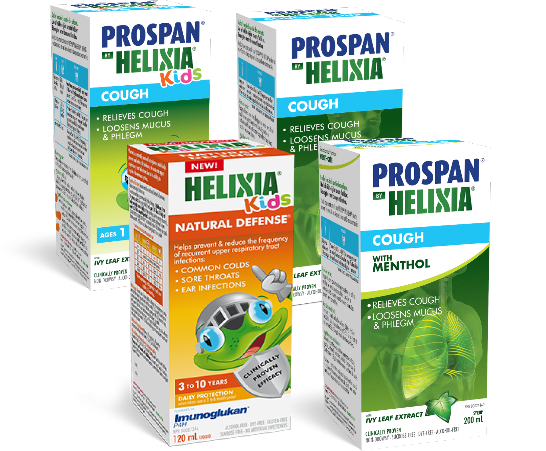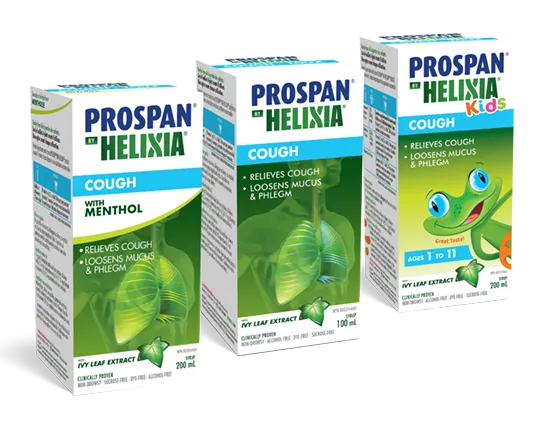Did you know that a cough is one of the most common medical complaints?
In fact, it results in as many as 30 million clinical visits per year in the US.[1] Most of us have experienced what this uncomfortable sensation is like and are likely to have to deal with it again. But to be able to cure something it is important to first truly understand it. Especially if something as recurring and common as a cough. In this article we’re going to look at the whys, whats, and hows of coughing as a symptom and also how it differs from other respiratory systems.
What exactly is a cough?
A cough is like your body’s built-in alarm system. When your respiratory system detects something irritating, it sends out a signal to the brain which then triggers the cough reflex. Essentially, your body is trying to clear out visitors, like mucus, dust, or germs. So, a cough is a natural response and your body’s way of trying to keep its airways clean.[2]
Let’s understand the classifications of coughing. A cough is usually distinguished and classified based on its duration.
- Acute Cough: Lasts less than 3 weeks
- Subacute Cough: Lasts 3-8 weeks
- Chronic Cough: More than 8 weeks
An acute cough is most commonly found and is usually caused by viral upper respiratory infection which is also called the common cold, and acute bronchitis[1]
Types of Coughs & their Causes
Now that we’ve seen the classifications, let’s dig a little more and try to understand the different types of coughs that one can contract.
1. Dry Cough[3]
A dry cough is often caused by irritation in the throat or upper airways. There can be various factors to trigger a dry cough like viral infections (common cold or flu), allergens, smoke, or even environmental irritants.
A dry cough is typically harsh and scratchy and doesn’t produce mucus or phlegm.
2. Wet Cough[3]
What can also be described as a ‘chesty cough’, a wet cough is usually characterized by the production of mucus or phlegm. It usually indicates lower respiratory tract issues, such as bronchitis, pneumonia, or chronic obstructive pulmonary disease (COPD). It’s the body’s way of clearing excess mucus from the airways.
Sometimes, a person may find spots of bright red blood while coughing up phlegm but it is usually not a cause of concern.
3. Chronic Cough[3]
As mentioned briefly before in the classification, a chronic cough is a persistent cough that lasts for an extended period of time, typically over 8 weeks. It can result from a range of underlying conditions like smoking, allergens, lung diseases, asthma, or medication side effects.
The frequency and severity of the cough can vary, but it tends to be ongoing and may lead to discomfort and disruption in daily life.
4. Barking Cough[3]
A barking cough is often associated with croup, which is a viral infection that affects the upper airways, especially in children. The cough resembles the sound of a barking seal and can be accompanied by a hoarse voice and difficulty in breathing.
5. Whooping Cough[3]
Also known as pertussis, a whooping cough is a highly contagious bacterial infection. It primarily affects infants and young children and may lead to severe respiratory distress.
A whooping cough usually begins with mild flu-like and cold symptoms and usually progresses to an aggressive and painful cough.
How do Coughs Differ from Other Respiratory Systems?
- Sneezing[4]
While sneezing is also a way for your body to protect itself, it’s the body’s way of clearing irritants from your nose whereas, in contrast, a cough is meant to clear irritants from your lower respiratory tract, including your lungs and windpipe.
- Wheezing[5]
Wheezing often comes with a whistling sound when you breathe and is usually caused due to narrowed airways. While coughing can be related to asthma, it’s not the same as wheezing.
- Shortness of Breath[5]
This sensation can be accompanied by coughing especially in severe cases. However, shortness of breath is more about struggling to breath comfortably, while coughing is about clearing your airways.
- Congestion[6]
The feeling of stuffiness in your nose and chest can lead to coughing as your body tries to clear mucus. Coughing and congestion often go hand in hand during colds and allergies.
In a Nutshell
Coughs are your body’s natural response to clear irritants from your airways. They can be caused by various factors, from infections and allergies to smoking and asthma. While they share some similarities with other respiratory systems, coughs are unique in their mission to keep your airways clean.
And remember, when it comes to reliable cough relief, Helixia® is the name you can trust. With its pharmacist-recommended, clinically proven, and additive-free cough syrups, you can wave goodbye to those irritating coughs and embrace a breath of fresh air.
Helixia® is a registered trademark of Norwell Consumer Healthcare Inc.
This product may not be right for you. Please read and follow the label before use for a list of contraindications, warnings, precautions, and adverse reactions.
REFERENCES
[1] Cough NIH,Source:
https://www.ncbi.nlm.nih.gov/books/NBK493221/
[2] Learn About Cough ALA,.Source:
https://www.lung.org/lung-health-diseases/warning-signs-of-lung-disease/cough/learn-about-cough#:~:text=Coughing%20is%20an%20important%20reflex,of%20germs%2C%20mucus%20and%20dust.
[3] Types of coughs: What do they mean? Zawn Villines -MNT, Source:
https://www.medicalnewstoday.com/articles/327142
[4] How Fast Is a Sneeze Versus a Cough? Cover Your Mouth Either Way! ALA,Source:
https://www.lung.org/blog/sneeze-versus-cough
[5] Breathing Problems You Shouldn’t Ignore,Stephanie Booth -WebMD,Source:
https://www.webmd.com/lung/dont-ignore-breathing-problems
[6] Flu or Cold Symptoms? -WebMD,Source:
https://www.webmd.com/cold-and-flu/flu-cold-symptoms











